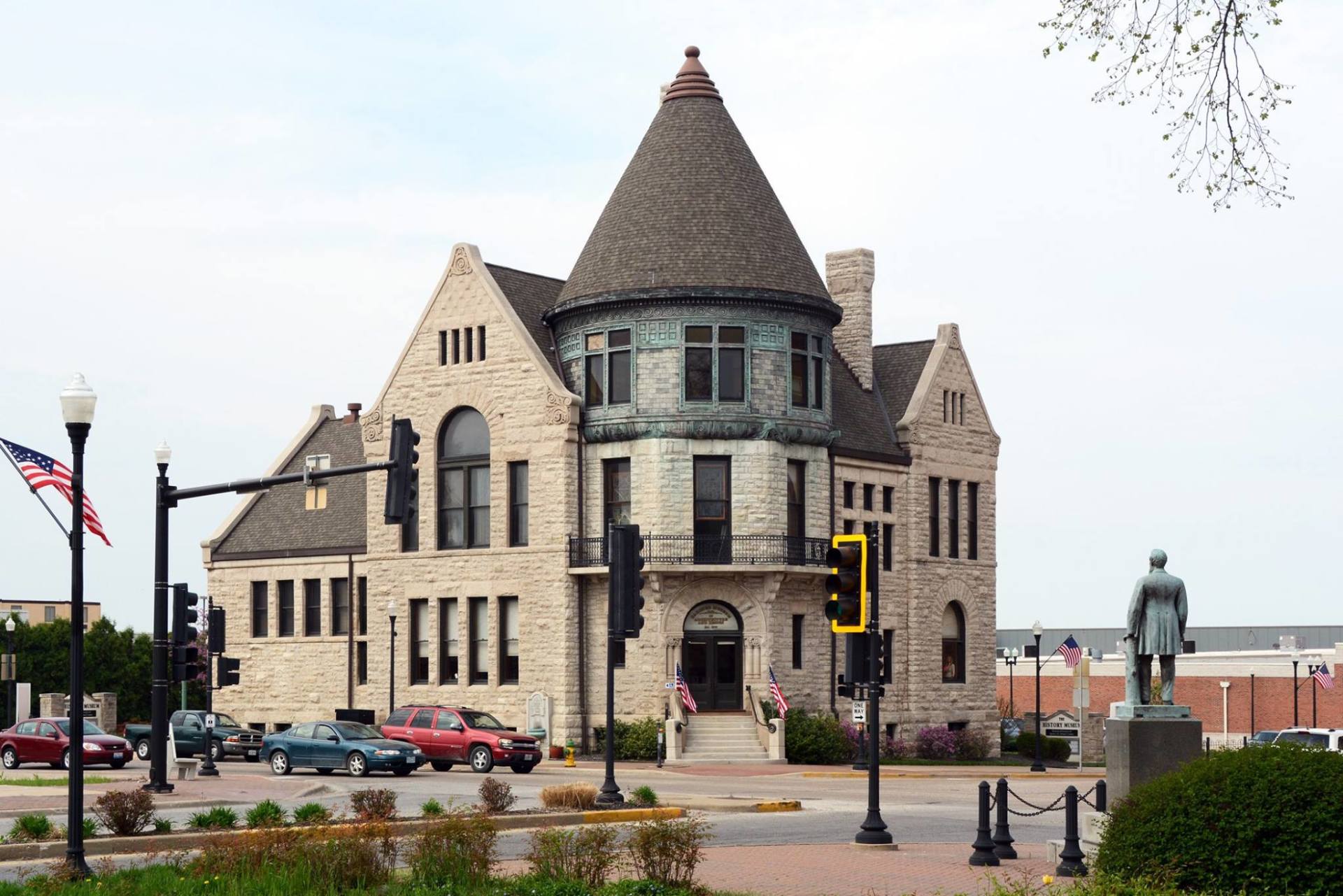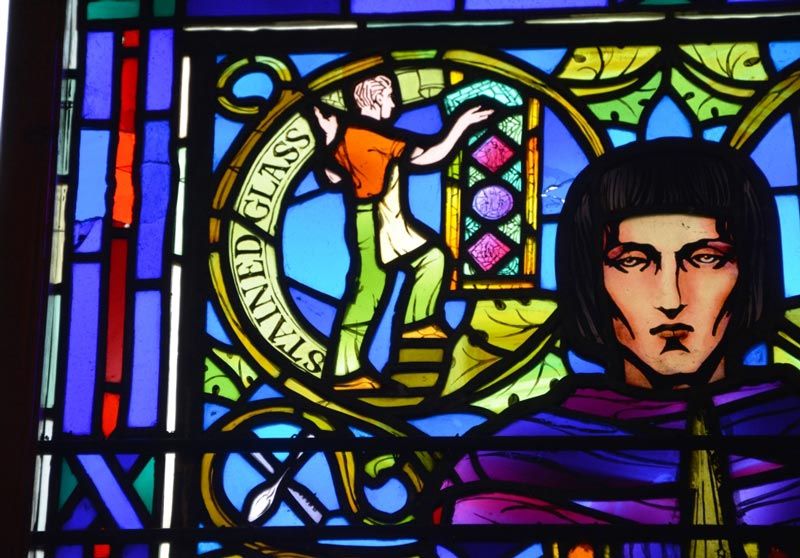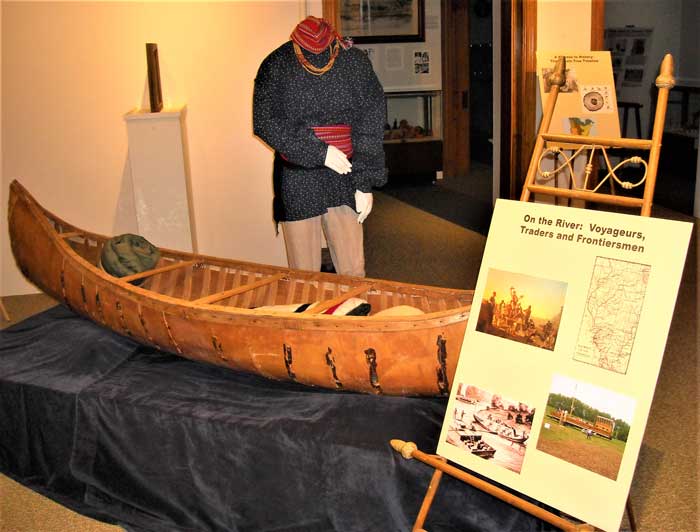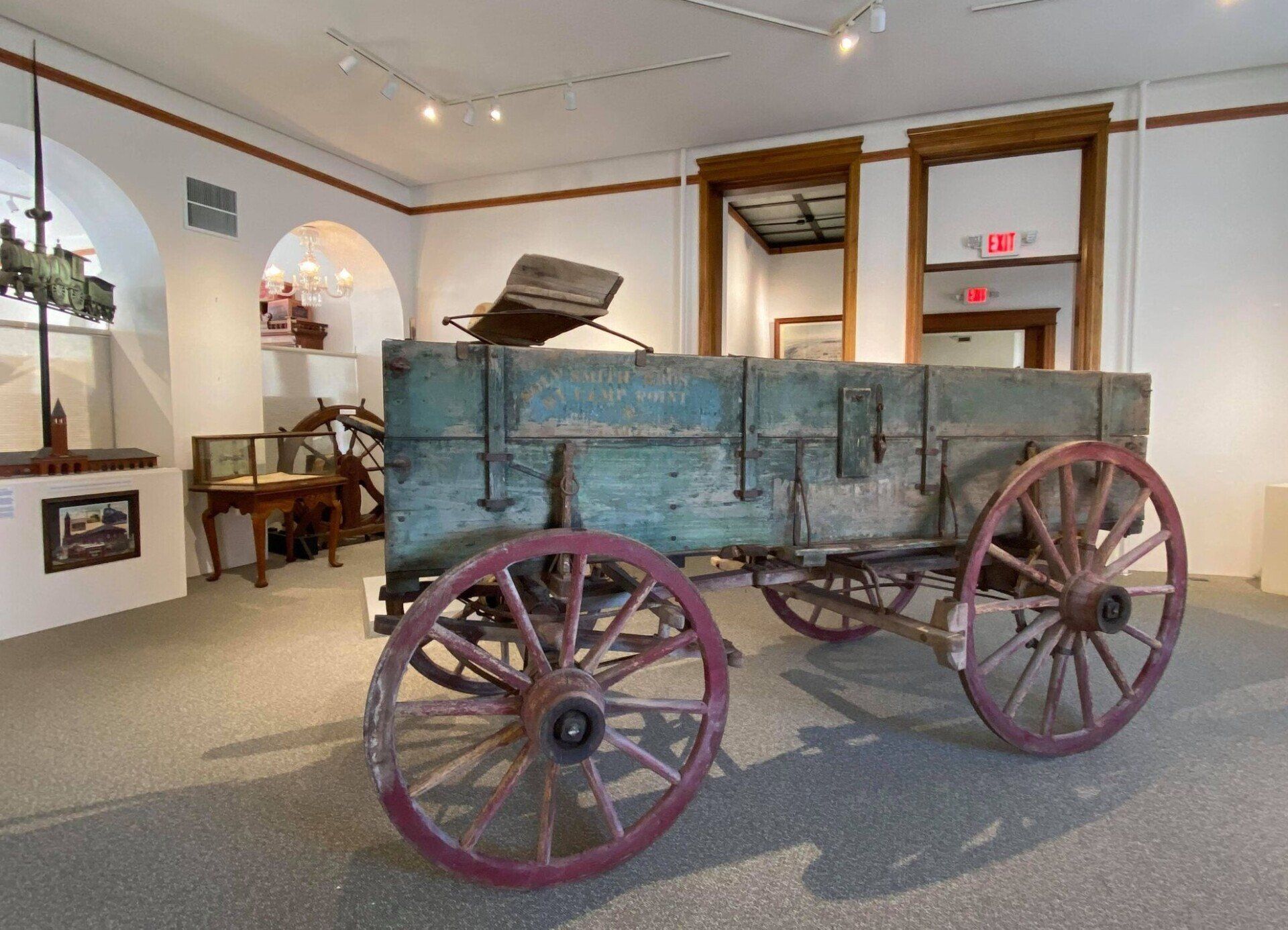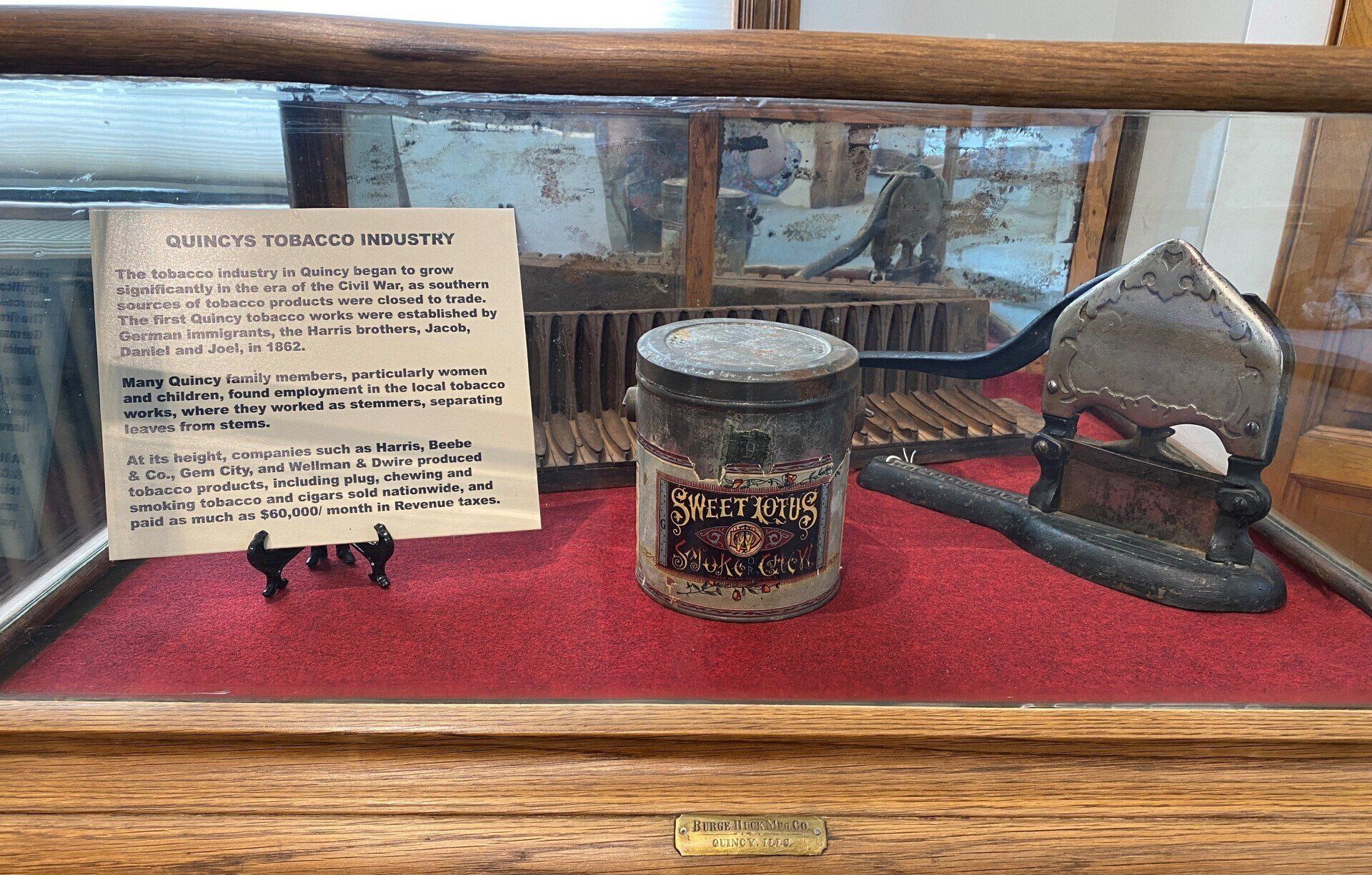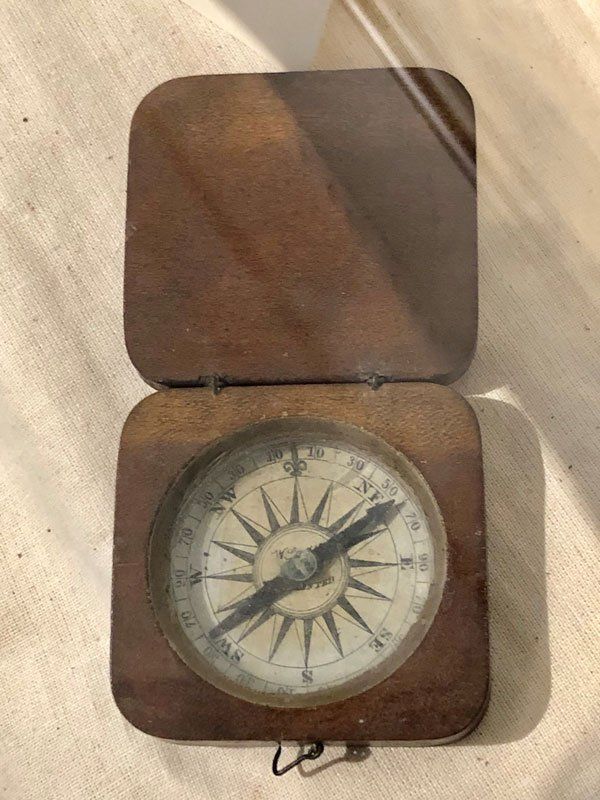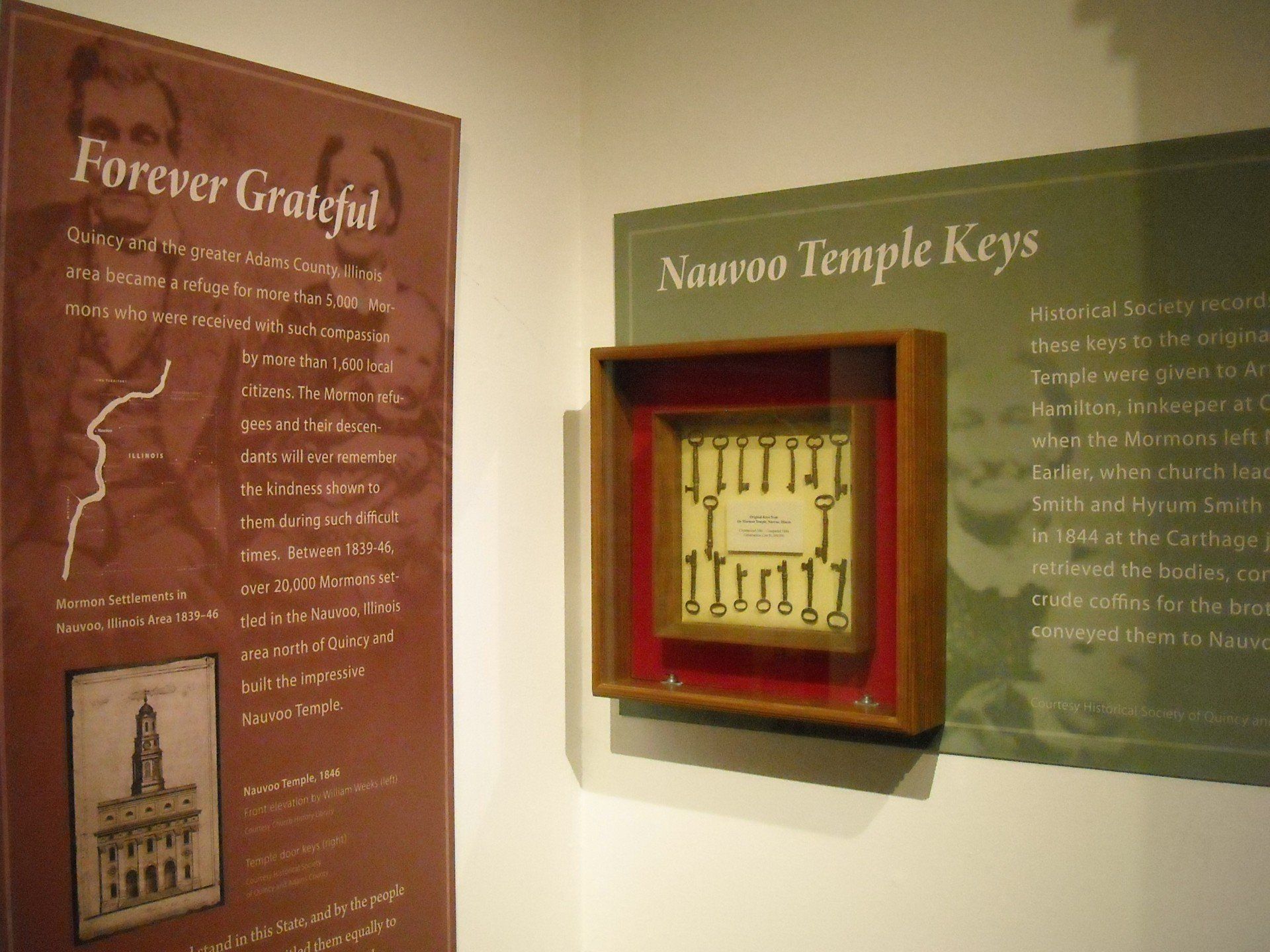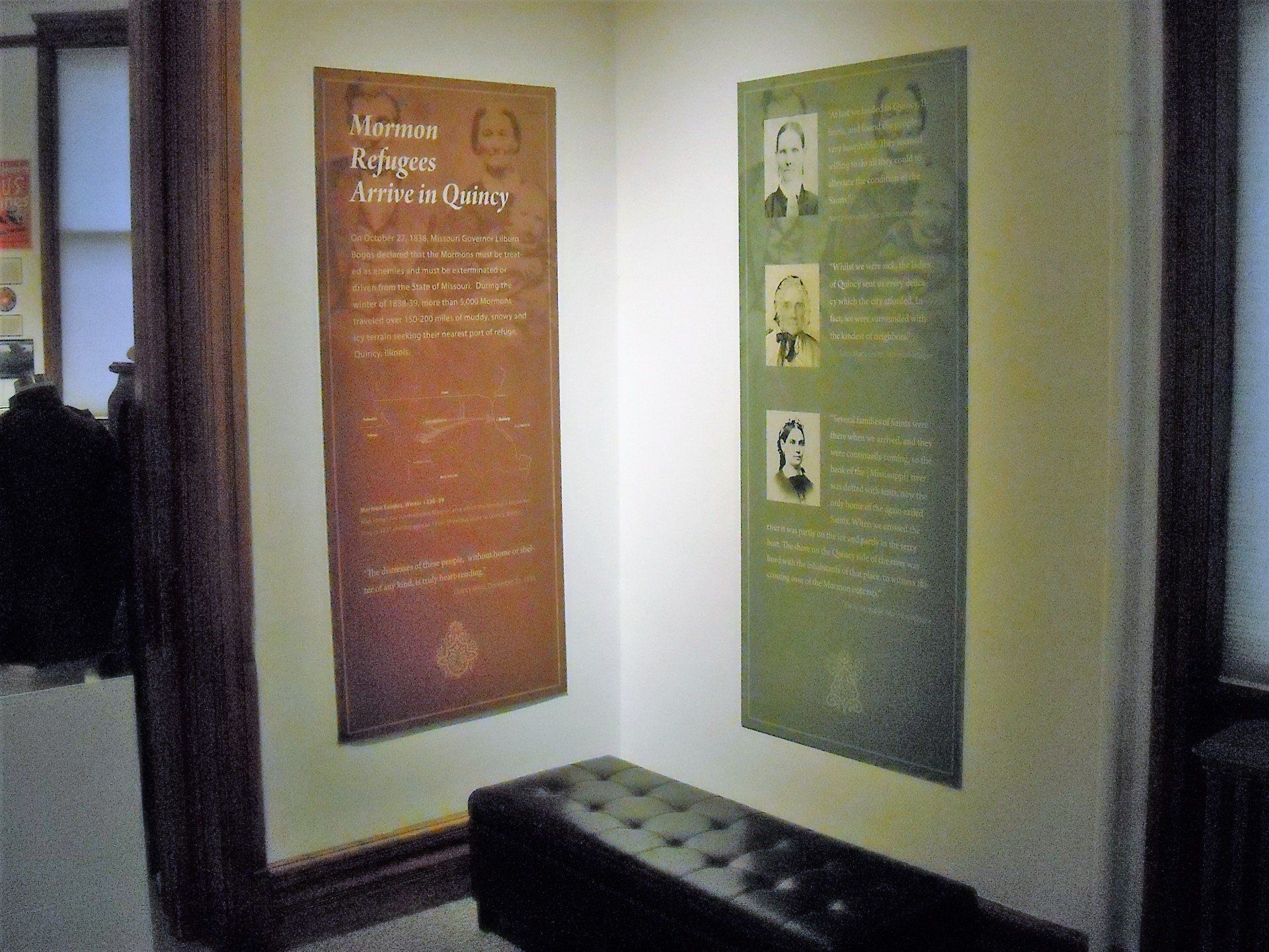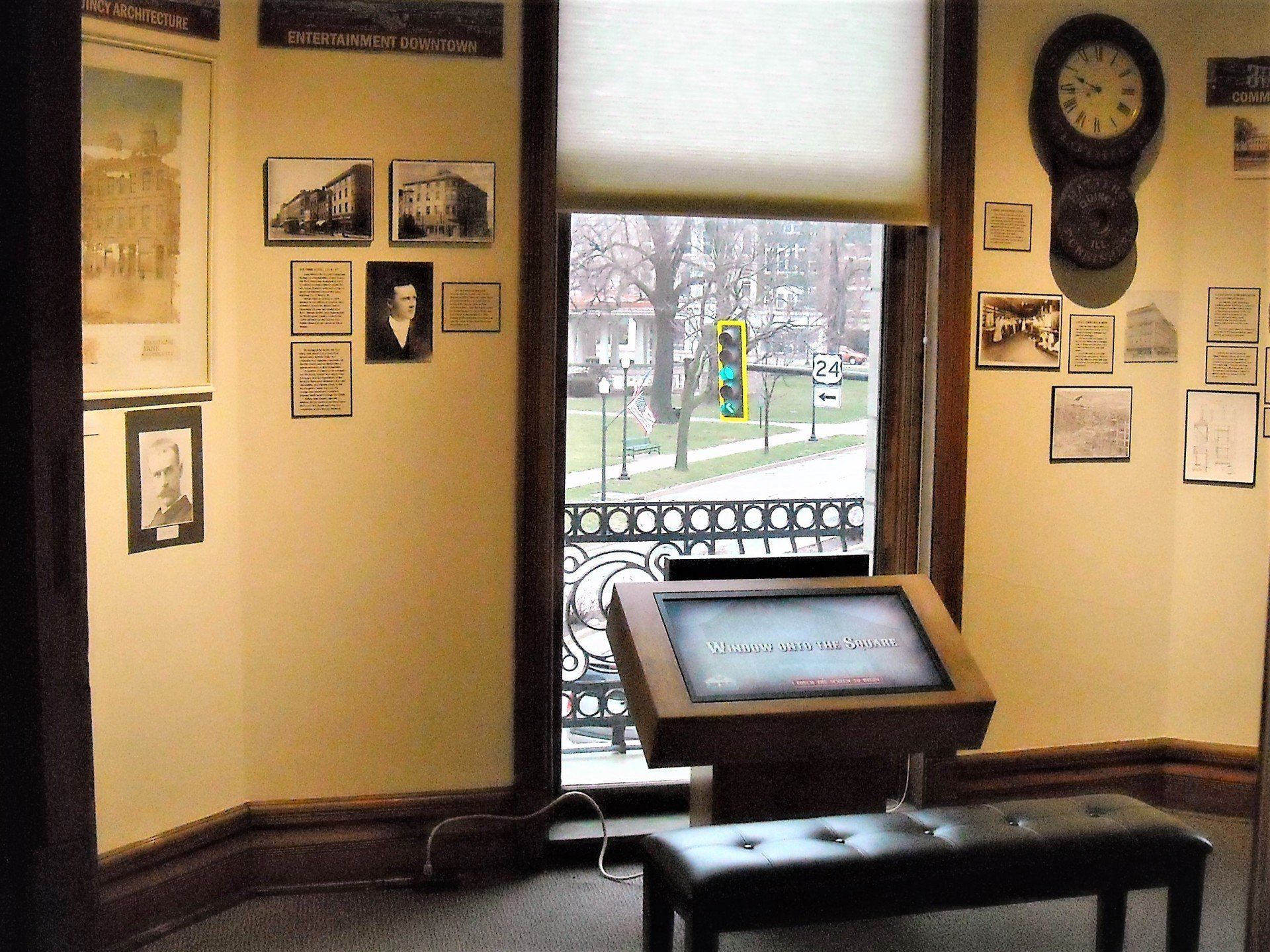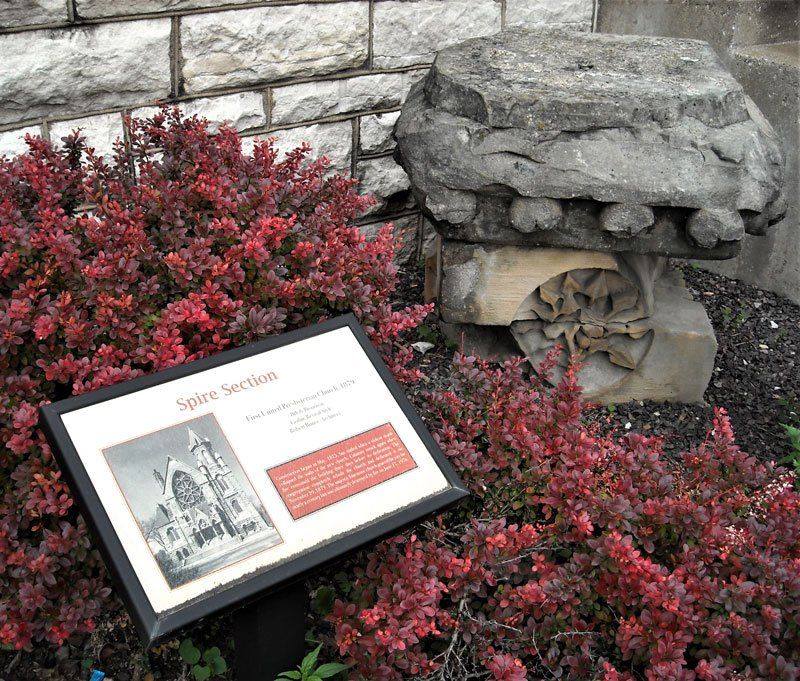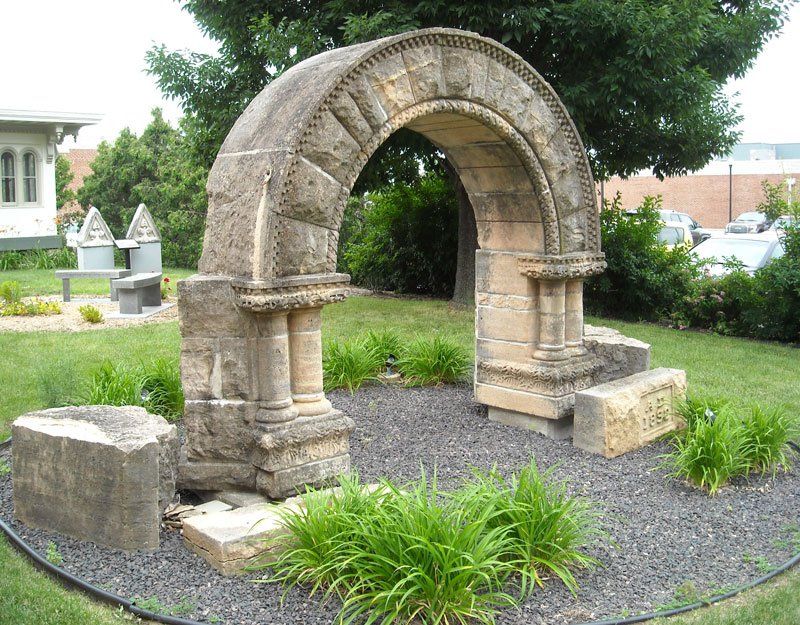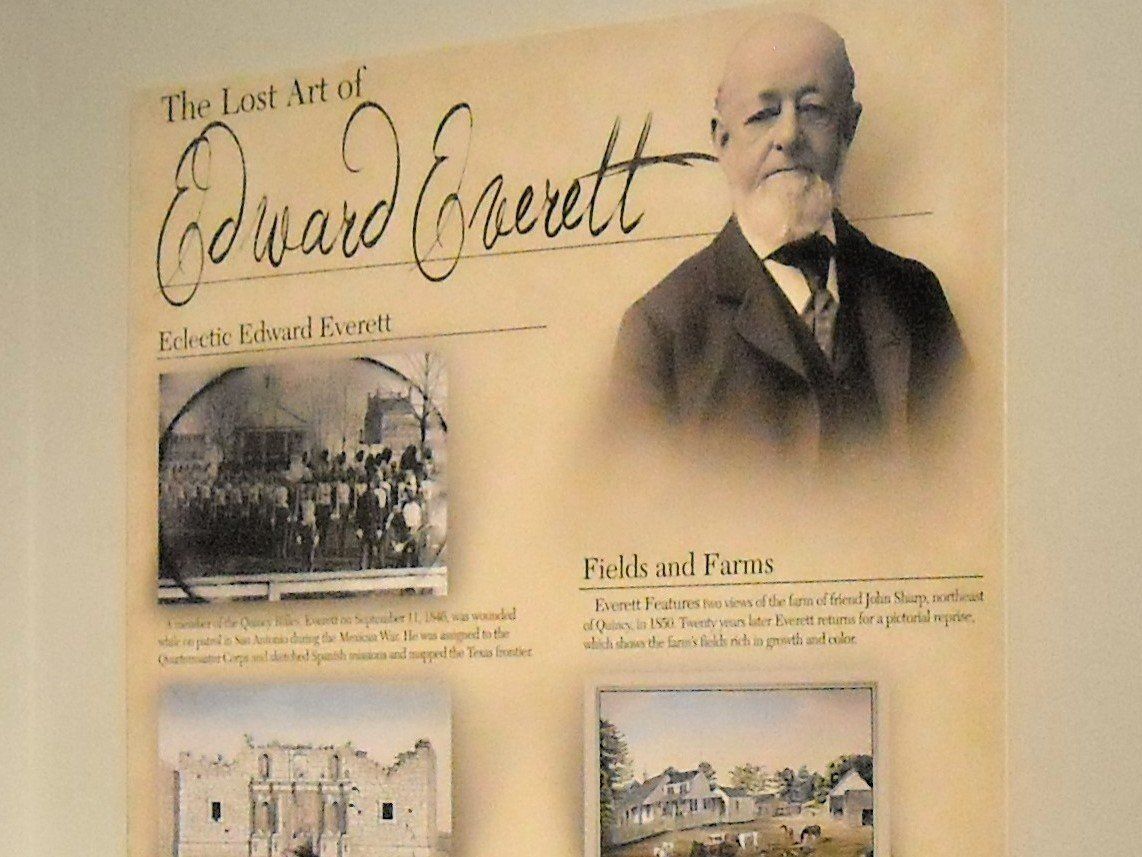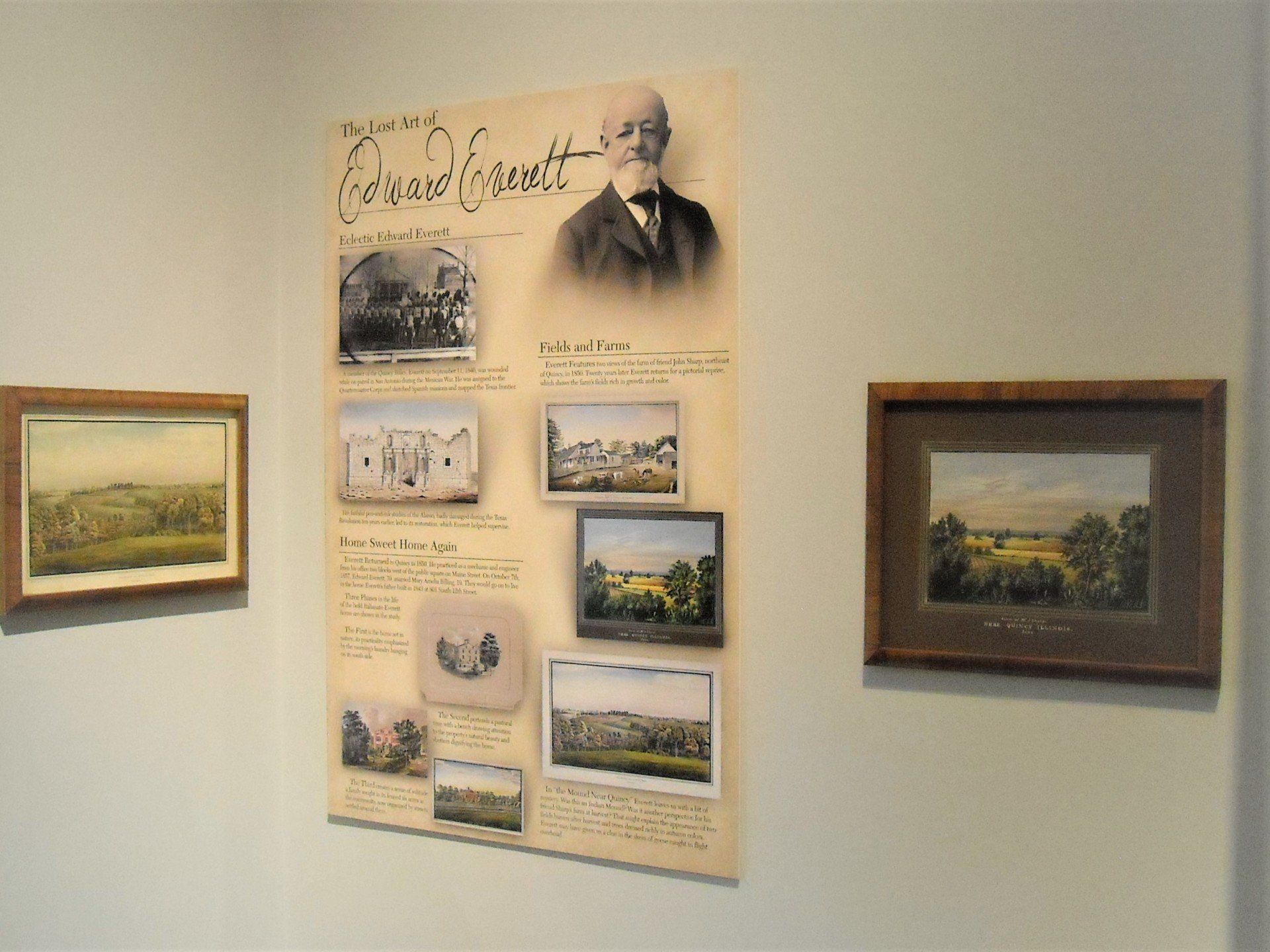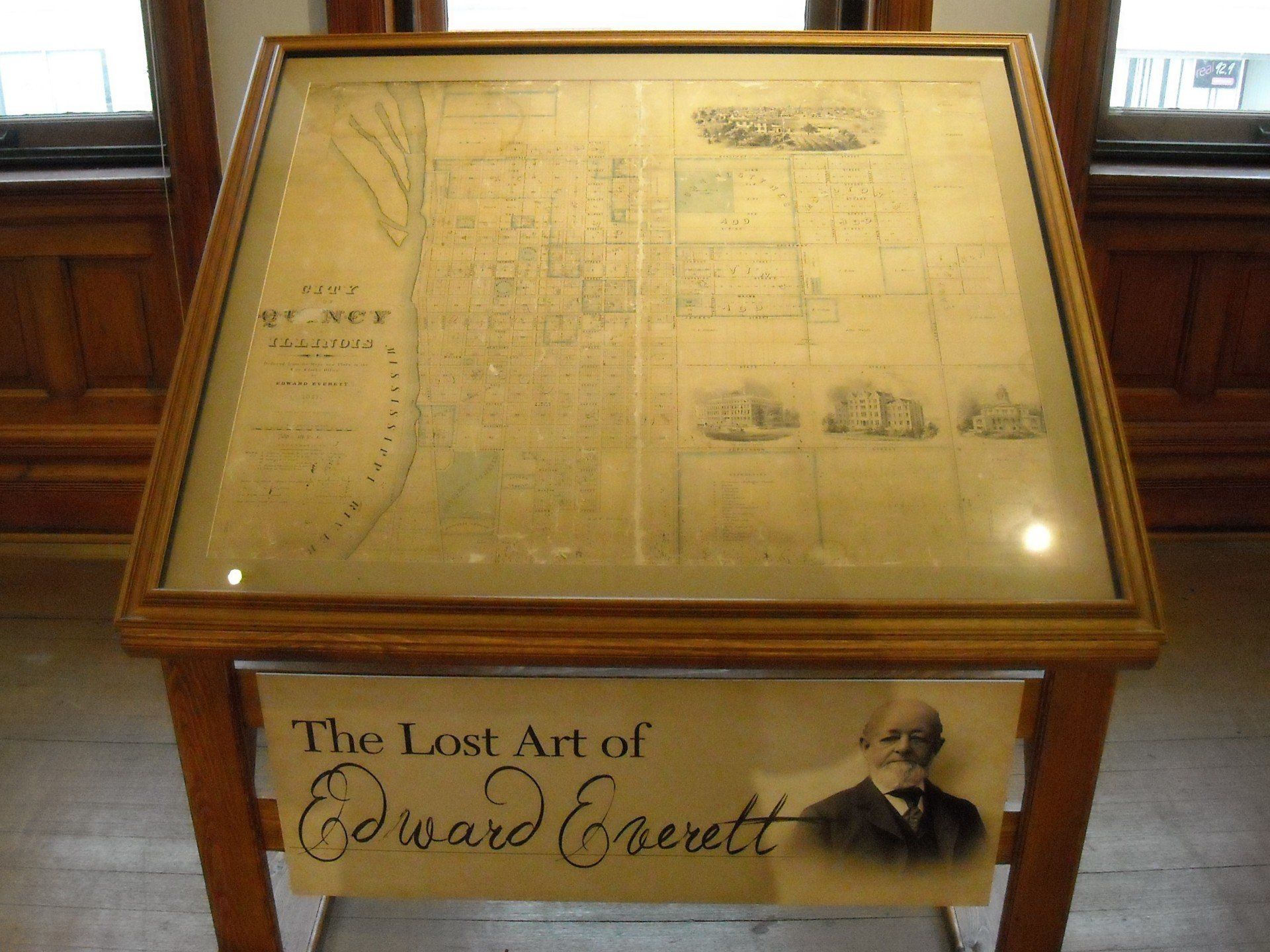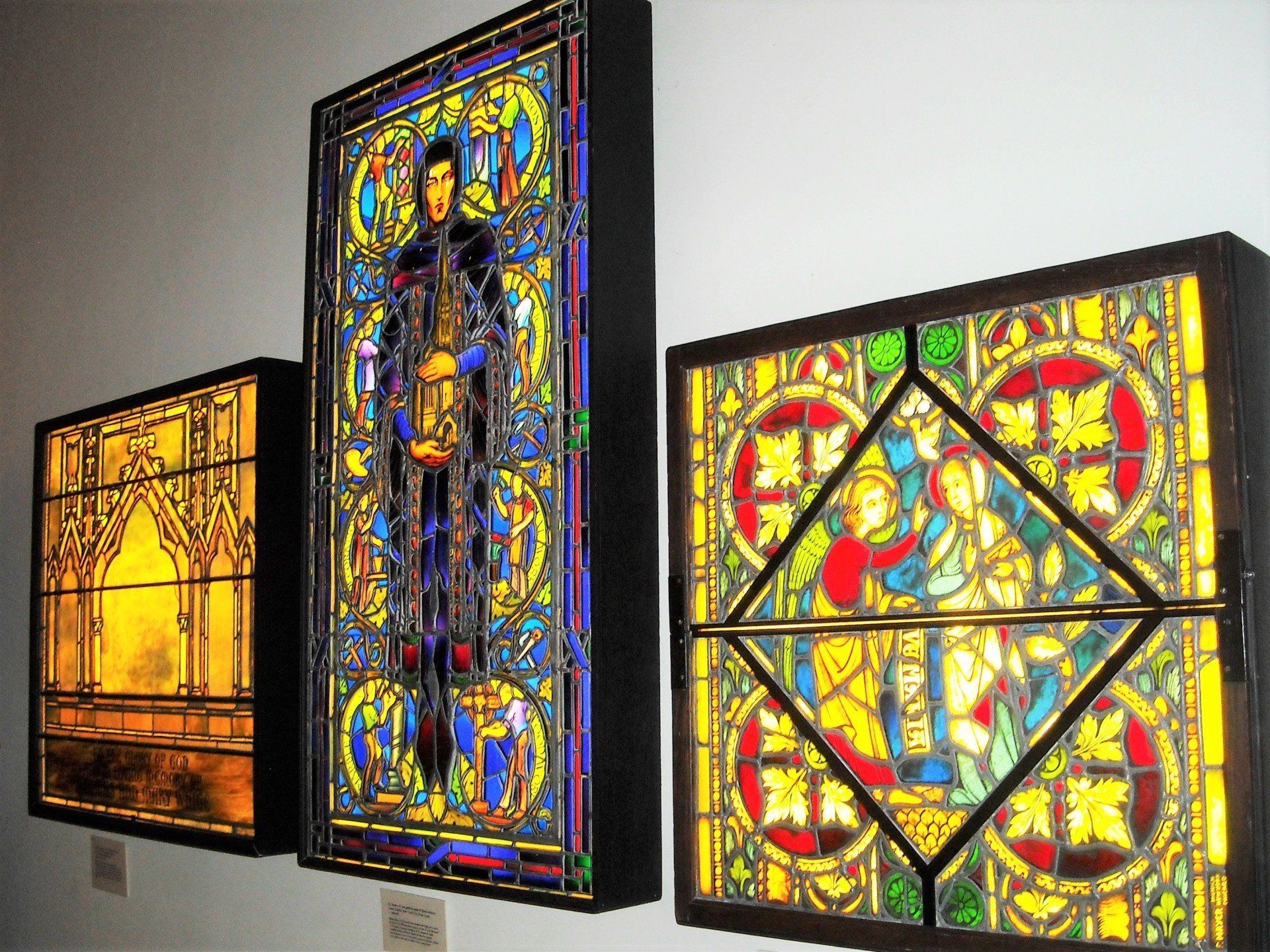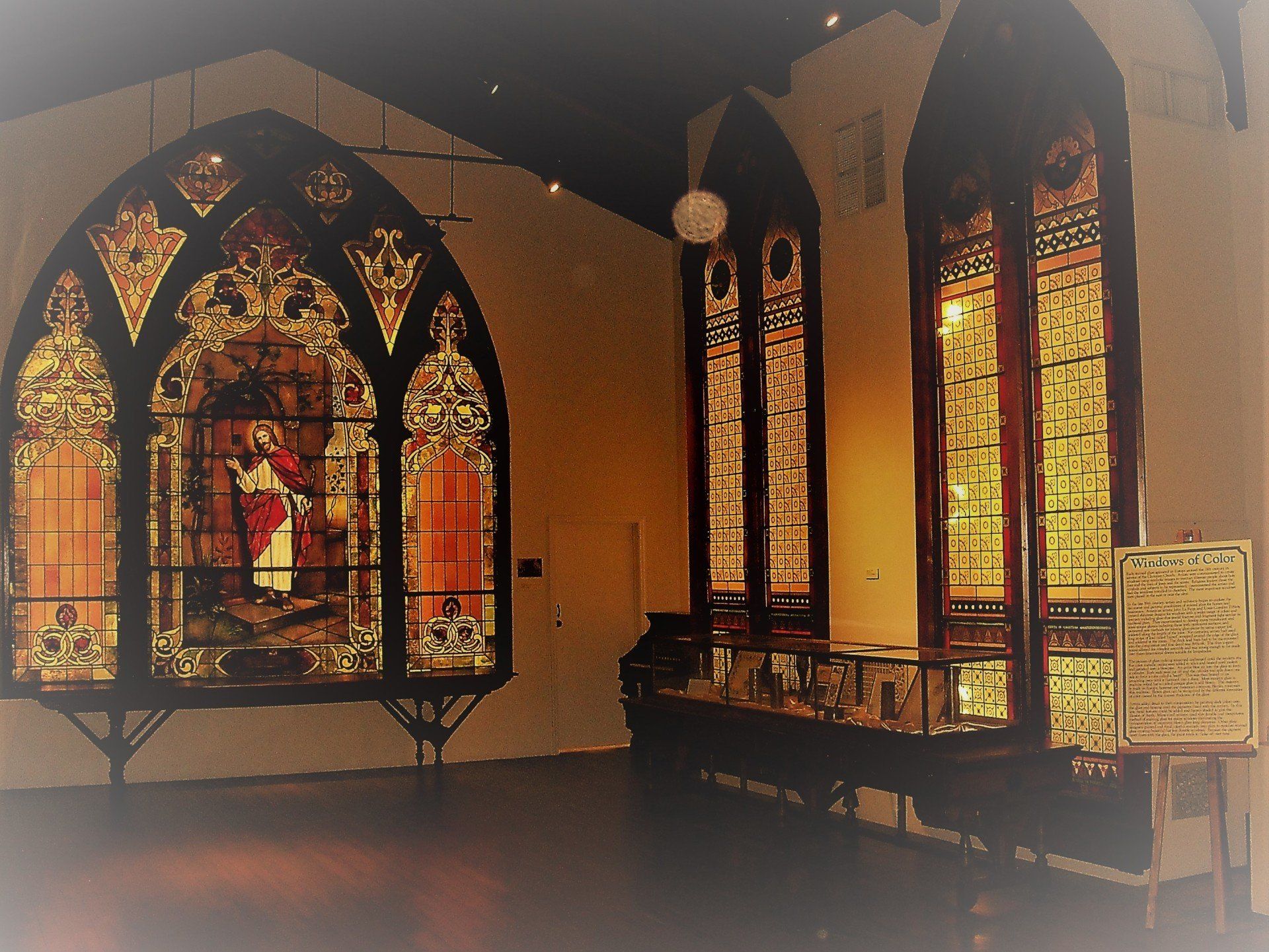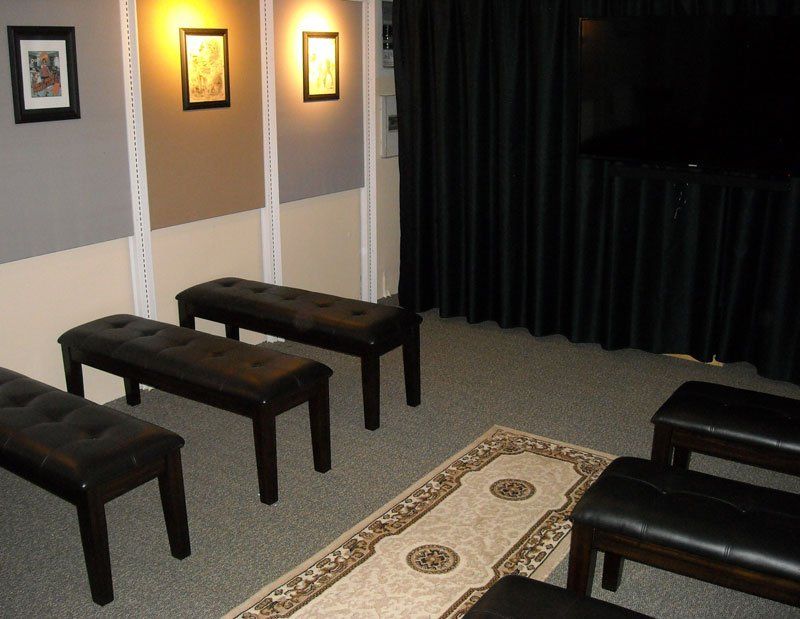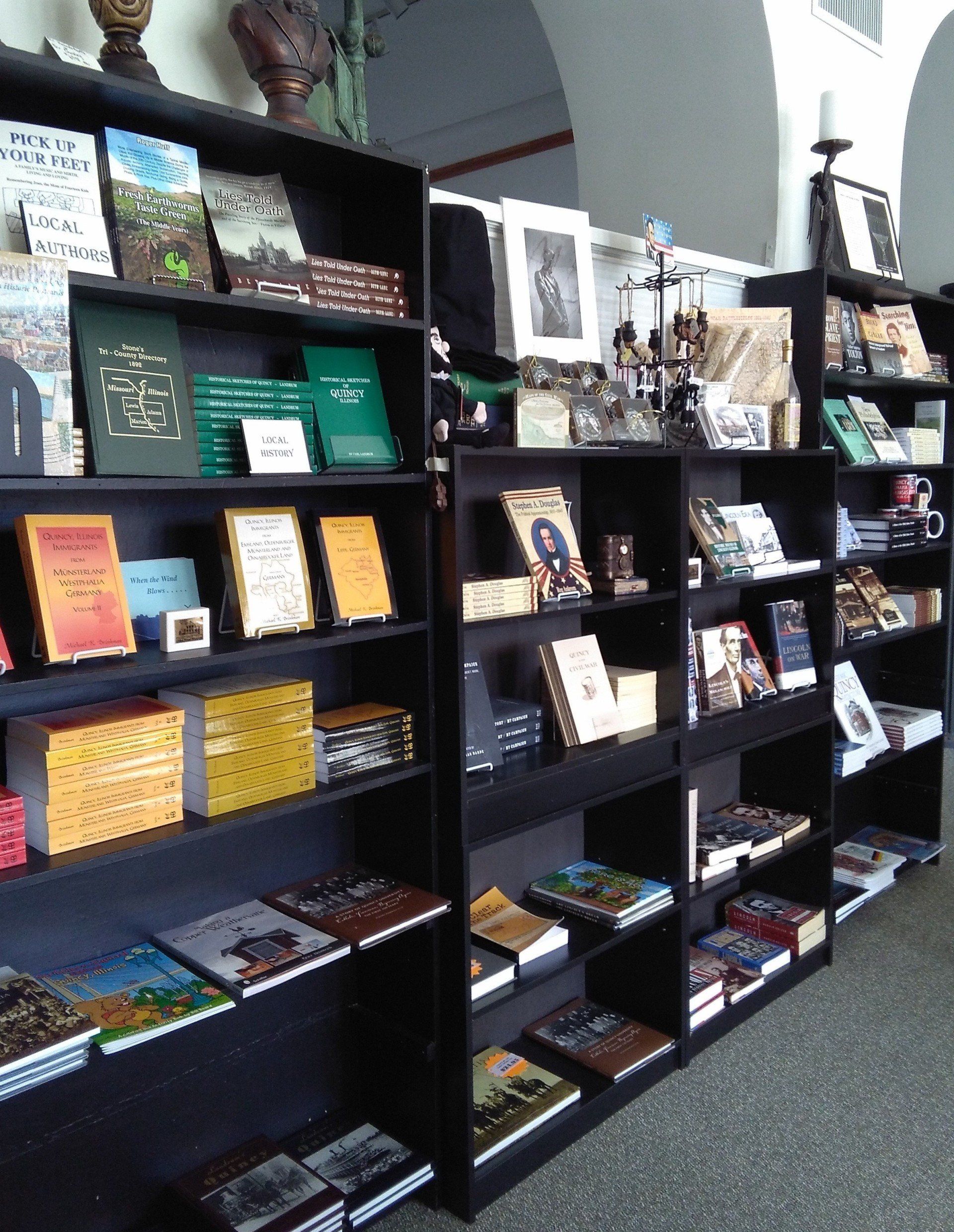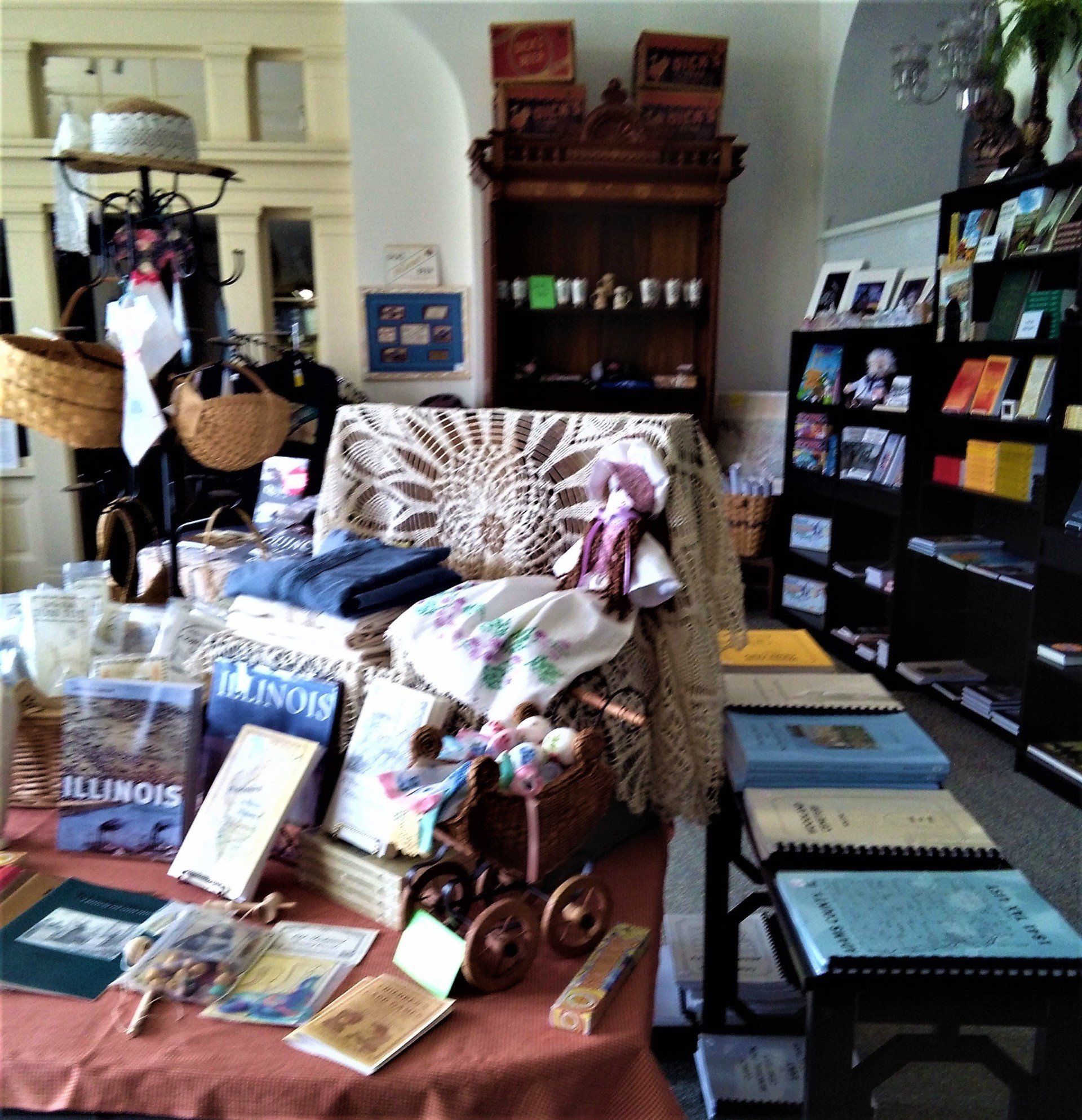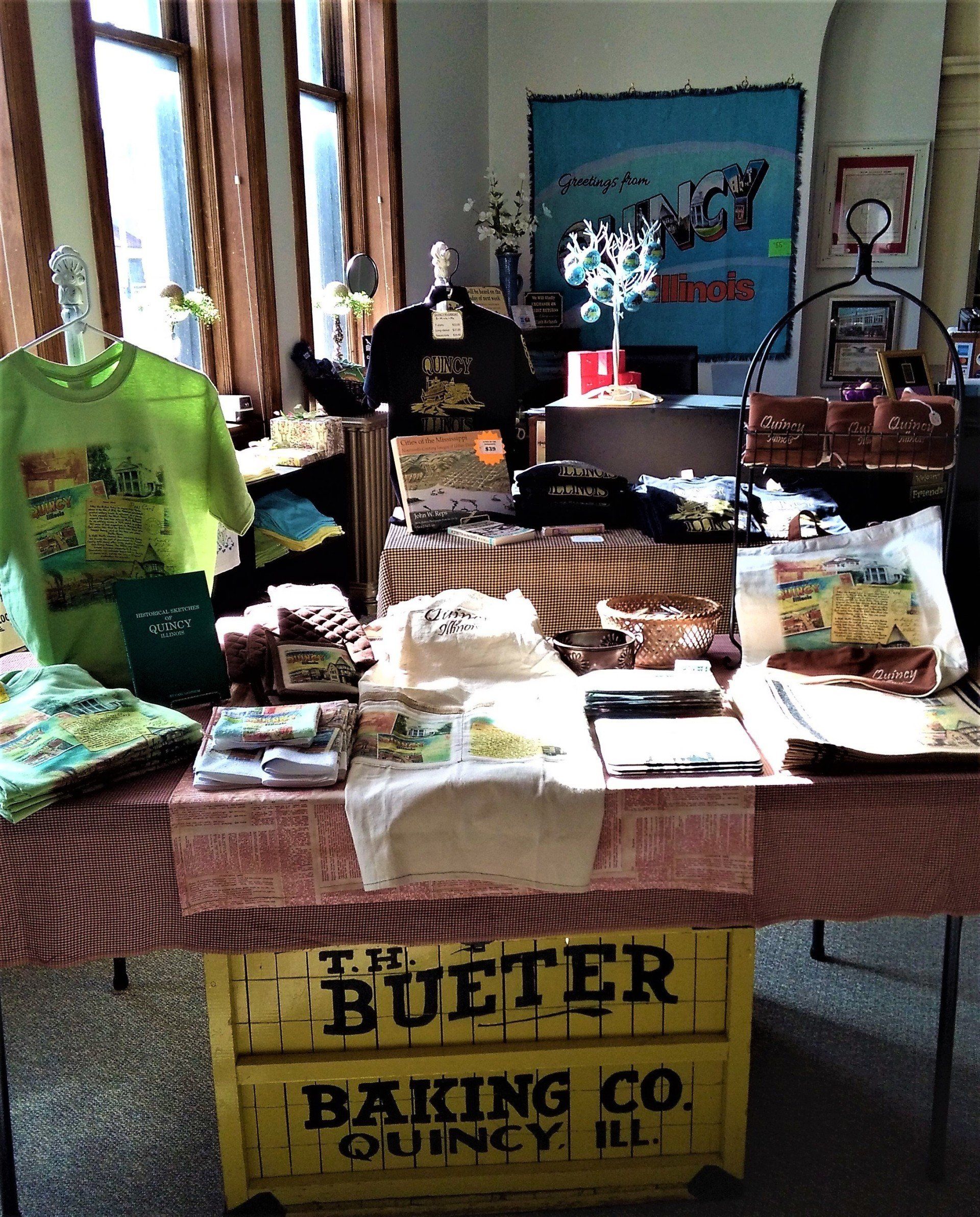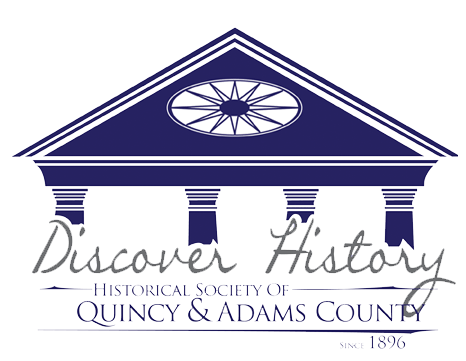HISTORY MUSEUM ON THE SQUARE
The History Museum on the Square houses permanent and rotating installations and features displays and artifacts from the pioneer era through modern times. A unique feature of the historic structure is the large, three- story, circular corner tower which is connected to an elevated front center entrance. A sculpture garden on the grounds features significant architectural artifacts from Quincy buildings that are no longer in existence.
The museum’s grounds, manicured and welcoming, are maintained by the Master Gardeners of University of Illinois Extension Unit 14 and feature well-placed pieces from the Gardner Museum’s Sculpture Garden.
The John Wood Memorial Plaza is located south of the Museum and is a tranquil landscaped patio area with engraved pavers and benches purchased by Society members. This beautiful space is fast-becoming a popular spot for receptions, lunches and weddings “near the Square.”
A stone drinking fountain on the east side of the building stands as a memorial to World War I Brigadier General Henry Root Hill.
Virtual Tours
History Museum Exhibits
The History Museum houses displays from the John Wood era through modern times and contains five permanent installations: Early Quincy,
the Stained Glass Gallery,
the Edward Everett Gallery,
Window onto the Square
interactive display, the City of Mormon Refuge
exhibit. Several hundred square feet of additional space allow for the rotation of other exhibits. There is also a Sculpture Garden
located on the Museum grounds.
Visitor Tours
The History Museum on the Square is open for self-guided tours, and there is no admission charge. Guided tours are also available, but reservations are necessary. Contact the History Museum for details at 217-214-1888.
Hours: Tuesday-Saturday, 10 am – 4 pm
A micro-theater
is also available in the Museum.
New Exhibit - The Golden Age of Quincy
The new “Golden Age of Quincy” exhibit at the History Museum, 332 Maine, celebrates the growth of Quincy during the late 19th century -- the legacy companies and industries which stimulated its growth; the public institutions and parks that ope ned during the period; and the diverse neighborhoods of fine homes and impressive business blocks that developed as the city grew in population and prosperity.
From its beginnings, Quincy’s location made it an ideal location for industries and companies providing services and goods for those taking part in the westward expansion of the nation.
Packing plants, saw and grain mills, foundries, wagon, saddlery, harness and farm implement makers, breweries and distilleries --- all were perfectly positioned to receive raw materials and ship finished products via river steamboat traffic or rail to local consumers as well as those heading west.
Early Quincy
A collection of photographs, documents, maps and objects from early Quincy settlers, including:
• The Bounty Lands
• First Settlers John Wood and Willard Keyes
• The Pioneer Village and 1st Christmas in Quincy
• Quincy Guards
• UGRR-Rev. Dr. David Nelson and Dr. Richard Eells
• Commerce on the River
City of Refuge
The Mormon Historical Site Foundation has developed a video and exhibit conceptualizing the exodus of Mormons from Missouri and Quincy’s humanitarian response in welcoming them to Illinois during the deadly winter of 1838-39. The keys to the original Mormon Temple in Nauvoo are also on display in this room.
Window onto the Square
A touch screen interactive presentation on the history of Quincy’s Washington Square,
Window onto the Square is located on the second floor of the History Museum. It features images of the city’s people as well as events, businesses and social establishments from the founding of Washington Square through the present.
Sculpture Garden
The outdoor Sculpture Garden contains a large collection of architectural artifacts from Quincy landmarks now destroyed.
Construction materials vary but include elements of wood, terra cotta, stone and metal. The arched entry of the Richardsonian Romanesque Musselman Building, 1892, is one of the pieces displayed on the grounds. Gem City Business College was originally located in this building.
Edward Everett Gallery
In Spring 2017, HSQAC announced the opening of the Edward Everett Art Gallery on the second floor of the History Museum. The Gallery contains eleven original paintings of the Mississippi River and the Quincy area painted by watercolorist Edward Everett of Quincy. These Everett watercolors disappeared from the city a century ago but were recently discovered and acquired by the Society for a permanent display at the Museum.
Art historians have compared Everett’s style to the Hudson River School of artists whose romanticized landscapes reflected an expansionist young America. Subjects include steamboat traffic on the Mississippi River painted by Everett as he sat high on the bluff above the bay on Oak Street.
Everett also produced a drawing of the original Mormon Temple in Nauvoo. His most important pieces were done during the Mexican War in 1846, when he made such intricate, detailed pen and ink sketches of the Alamo that he was later selected as one of the mission’s renovators.
Stained Glass Gallery
The History Museum’s Stained Glass Gallery houses the stained glass collection of the Gardner Museum of Architecture and Design which was conveyed to the Historical Society of Quincy and Adams County with the building and other collections in 2012. Frank Lloyd Wright and Tiffany & Co. Studios are among the glass designers for the pieces, which include windows from several area churches and buildings. Highlights of the collection include:
St. James of Ulm: Also known as “the Craftsman” window. In the Medieval-styled piece, the central figure is St. James, patron saint of glass strainers. Surrounding the figure are 8 roundels depicting the trades of church art.
Christ at the Door:
The tallest piece in the collection. The Robes of Christ are iridescent and molded to show the folds of His Robes.
Thomas and Mary White Memorial Window:
Designed by Tiffany and Co. Studios. This piece was from the First Union Congregational Church, 12th & Maine, Quincy and features an architectural rendering of a church/cathedral in hand blown and cast glass.
Transom Window:
Designed by Frank Lloyd Wright. This window was in a storefront at 717 Maine Street, Quincy, from 1920-1988.
Reading Room Windows:
Paired, tall arched windows from the 1st United Presbyterian Church in Quincy. These four windows are made of European style cathedral glass and feature florals and arts and crafts influences.
St. Vincent’s Home Chapel:
Pair of lancette windows from St. Vincent’s Home. They were featured in the Chapel between 1897 and 1989.
Vermont Street Baptist Church:
Originally installed in the sanctuary and choir loft of the Vermont Street Baptist Church. The windows represent the earliest colored church glass known to be from Quincy.
Annunciation Window:
Designed by Franz Mayer Glass Works, Munich, New York, and Chicago, ca. 1930. This stained and painted square window is hinged to fold for use as a salesman’s sample.
Micro-Theater
A micro-theater has been developed at the History Museum. It seats approximately 15 people and serves as a quiet, private environment where patrons can watch historically themed DVDs and videos. A 7-minute video, Quincy: The Lincoln Era, developed by the Historical Society under a grant from the Marion Gardner Jackson Charitable Trust, is now available. Lincoln re-enactor George Buss, who serves as a tour guide in the video, educates the viewer on Quincy-related sites and events in his life as he discusses several important locations in the city. Future videos are in the planning stages.
History of the Building
The History Museum on the Square
is a significant landmark building, situated at the gateway of the city and prized by residents of the area. For years it has provided young and old with an architecturally amazing yet comforting and familiar site to visit in downtown Quincy.
Completed in 1888, the Romanesque structure was designed by Chicago architects Patton and Fisher
and built with limestone from the Menke Stone Works
of Quincy. It is one of several of the architects’ buildings listed on the National Register of Historic Places.
The structure is an excellent example of Richardsonian Romanesque
architecture, with rough faced stonework, deep set windows and parapet gable roof. A new addition constructed in 1929 by local architect Ernest Wood
is attached to the south side of the building. One of the most notable features of the building is the corner entrance tower. At three stories in height and with a unique conical roof, it is a stately presence at the corner of 4th and Maine. Textured stone walls contrast with smoother brick walls on the exterior of the original building.
Inside, mitered hardwood panels cover the ceiling of the Stained Glass Gallery, and the original carved butternut woodwork, pocket doors and transoms offer other examples of the superb, detailed craftsmanship of builders during the 1800’s. The Wood addition is constructed of stucco and has simple lines and a flat roof.
The building served the community as the Quincy Free Public Library and Reading Room
from its construction until 1974 when a new library facility was completed. In 1977, the “old library” was sold to John Willis Gardner III
who redesigned the interior and repurposed the building as the Gardner Museum of Architecture and Design.
Quincy's History Shop
The Society’s gift shop, Quincy’s History Shop, is in the History Museum on the Square located at 332 Maine St.
The shop has the area’s largest selection of local souvenirs and history books on topics that include the Underground Railroad, railroads and river boating, architecture, Abraham Lincoln, Stephen A. Douglas, German immigrants, cemeteries, and much more.
Call or drop by soon - there is much more to see. And don’t forget to check out the Facebook page for the latest on events, new merchandise and exhibits.
Quincy’s History Shop Hours:
Tuesday-Saturday
10 am – 4 pm
Phone: 217-214-1888
332 Maine St. | Quincy
Check out the History Shop's
Facebook Page!
